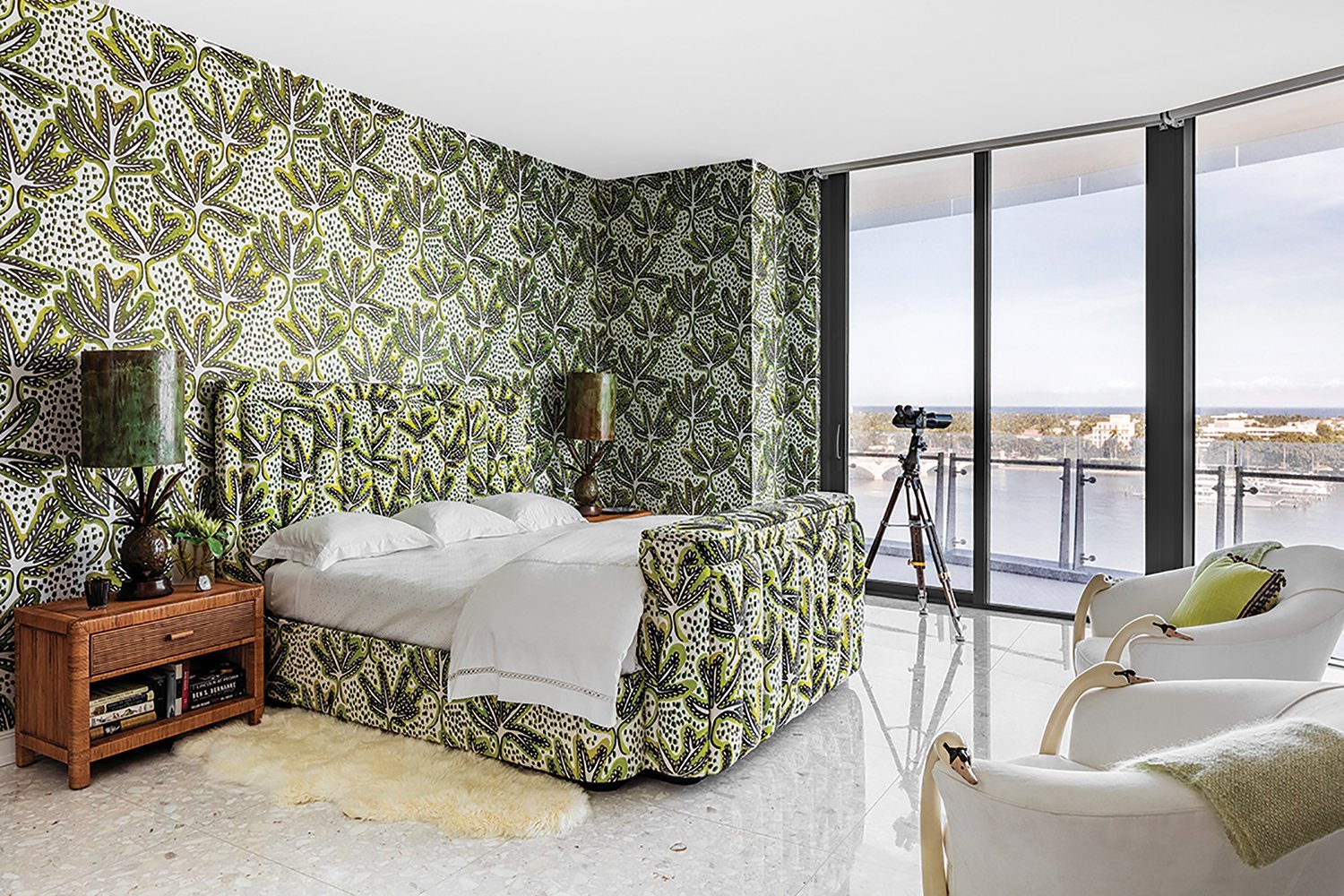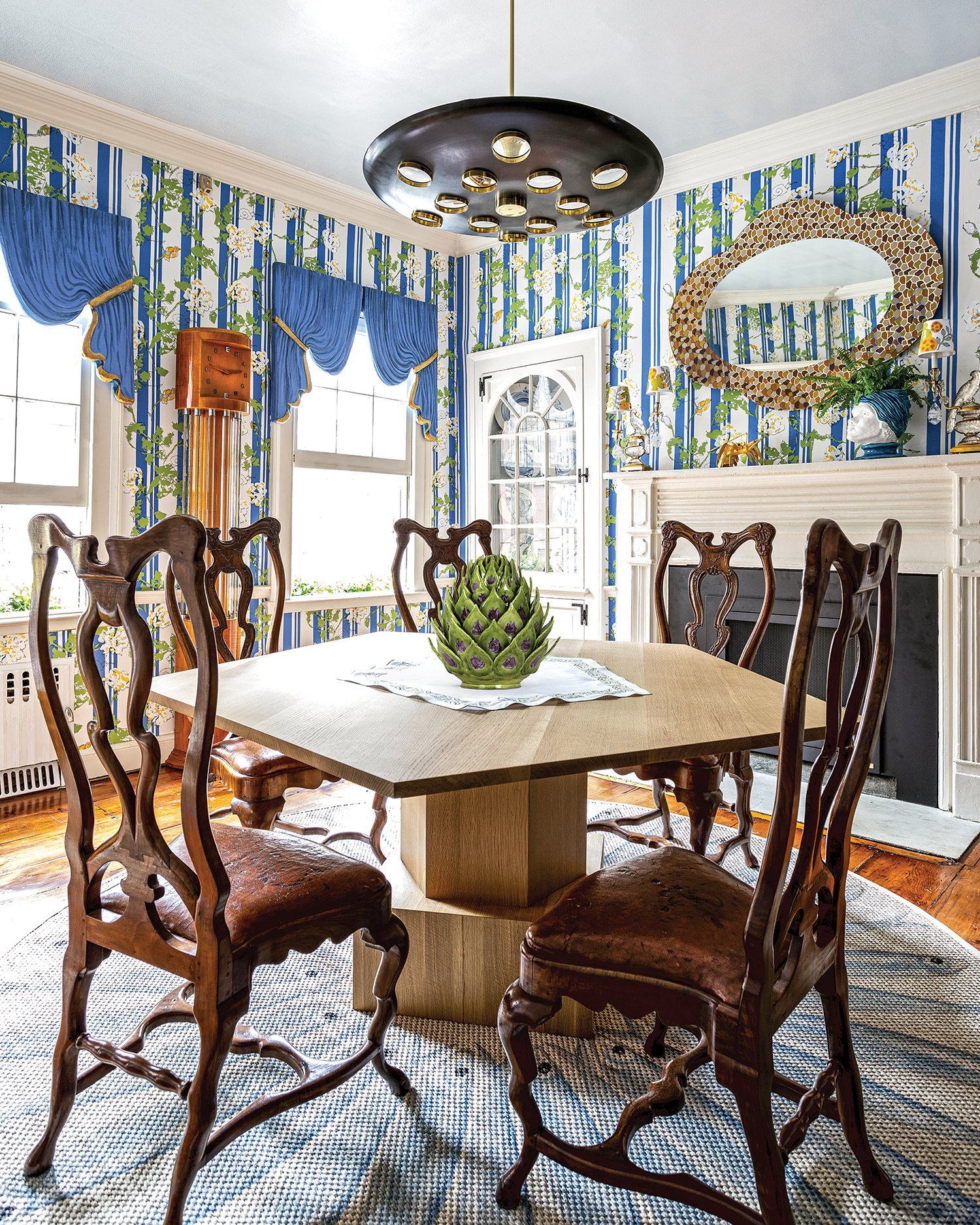Harry Heissmann’s Advanced Trade Techniques Courses Are Rare Gems
Interior designers’ relationships with artisans are extremely valuable. Designers and master craftspeople become partners in making, collaborating around every detail to turn their customers’ dreams into reality. Perhaps there’s no one better suited to teach what’s behind this process than Harry Heissmann, the owner of Harry Heissmann Inc. and the instructor of NYSID’s quartet of courses called “Advanced Trade Techniques,” which teach students high-level designing in Custom Upholstery (I), Custom Flooring (II), Custom Wall Treatments (III), and Custom Cabinetry (IV). Heissmann shares his thoughts with Atelier Managing Editor Jennifer Dorr here.
When he first came to New York from Germany, Harry Heissmann worked for three years in the office of Juan Pablo Molyneux and followed that with a year at Stephanie Stokes Inc. He then spent nine years honing his skills in the offices of the late Albert Hadley, the legendary designer and influential member of NYSID’s Advisory Board, who dubbed Harry’s desk “the magic shop.” In 2009, Heissmann struck out on his own and started his firm. He sits down with Atelier’s managing editor, Jennifer Dorr, to share a glimpse into what he teaches in NYSID’s Advanced Trade Techniques courses. These six-week “mini-courses” are one-credit electives in the undergraduate program.
Jennifer Dorr: What do you teach in Advanced Trade Techniques, and how do you teach it?
Harry Heissmann: What sets you apart as an interior designer is your toolkit, the number and quality of sources you have at your fingertips so you can go into any client meeting and hit them with originality.
It’s one thing to have fabulous ideas, but those ideas are only as good as the people who can make them a reality. So, these courses consist of some lecturing, but more field trips. I’m taking students to meet the people who are the best in their craft. It’s a very exclusive behind-the-scenes introduction. Lots of these shops are hidden on the higher floors and don’t even have storefronts! We might go to the D&D Building and meet someone who is an expert in wallpapers, for example, or I might introduce you to Miriam Ellner, an artist with an expertise in Verre Eglomisé (the technique of reverse gilding and painting on glass).
You are much more likely to find your voice in this field if you know all of the possibilities and then distill what’s relevant for you. The more you know, the more tools you have to execute your client’s dream.
The Bristol Palm Beach. Design by Harry Heissmann. Photo: Kris Tamburello
JD: What’s your design philosophy?
HH: In my practice, I strive to make every project unique. My brand is the opposite of formulaic and predictable. It’s not about my style, it’s about the client’s dreams. I’m old fashioned: The client is king. It’s the service that matters. I suppose you could say I take a couture approach, or a bespoke approach, to interior design, in that everything is tailored to the client. It’s a very personal language. I’m not “gilding the lily,” but rather paying attention to every nook and cranny. This is about bringing in craftspeople who are masters and who also understand service: the clock winder, the person who can do a French Polish on a dining table or one who can tailor a club chair to your body and preferences. That’s what interior design means to me: making a client’s surroundings as comfortable, creative, and personal as possible.
JD: Where did you learn to design and create custom objects and materials?
HH: It goes back to my education at the Academy of Fine Arts in Munich, Germany. It was a Master of Interior Design Engineering program, a hybrid of interior design, architecture, and engineering that does not exist in America. It was one thing to dream up a piece of furniture or an object and draw it, but quite another when our professors insisted on having us build our designs ourselves. You were instructed by the artist working in a specific atelier on how to translate your drawing into a reality.
Also, I did learn a lot about materials at Juan Pablo Molyneux’s office, where I first worked when I came to New York. And Mr. Hadley, of course, was like a walking encyclopedia of materials and styles. His office is where I honed in on the idea of not having a specific style but being able to work in different media to make the client’s dream a reality.
I think you do yourself a disservice if you work in one style. The location of the project is so important, as color looks different in Miami than it looks in New York. Another important part of my courses is to get beyond the computer. The computer is a great initial resource, but I still believe in working with all of the senses. For example, you have to touch a fabric to know whether it drapes well enough to become a curtain.
The Bristol Palm Beach. Design by Harry Heissmann. Photo: Kris Tamburello
Dining room of Brooklyn Heights Designer Showhouse 2019. Design by Harry Heissmann. Photo: Christopher Delaney
JD: Will you tell me about a project that encapsulates your deep knowledge of custom design?
HH: There’s a dining room I created for the Brooklyn Heights Designer Showhouse in 2019 that exemplifies my approach. There are many custom objects in the room that I made with friends, and that’s what makes it truly unique and fun. The residence was one of the oldest houses in Brooklyn Heights, and it’s rumored that a sea captain once lived there, so I imagined his descendants were living there with some of his things and some new layers of design. The wallpaper is a historical “flower and snail” pattern that I recolored with Tillett Textiles. My friends, muralists and specialty wall finishers at Artgroove, hand painted the rug with sardines. The dining table is by Tinatin Kilaberidze, and it’s set for five because I wanted to acknowledge not everyone is in a couple. This is my version of bringing everyone to the table. The artichoke centerpiece by Christopher Spitzmiller is perhaps my favorite thing in the room.
JD: Which Advanced Trade Techniques courses will be available in Fall 2023?
HH: We’ll offer Advanced Trade Techniques II: Custom Flooring and Advanced Trade Techniques IV: Custom Cabinets.
Original blog post from: https://www.nysid.edu/atelier-mag/the-secrets-of-bespoke-design



